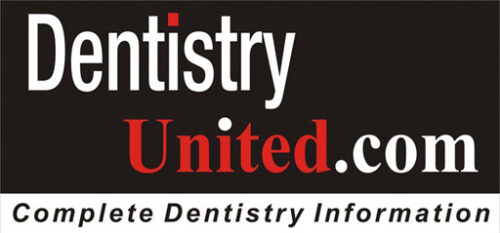Dental pain is one of the most distressing experiences for patients, often leading to urgent visits to the dentist. Effective pain management is crucial not only for patient comfort but also to ensure proper treatment outcomes. When a patient walks in with dental pain, a structured approach is followed to diagnose and alleviate discomfort promptly. This blog explores the different methods employed in modern dentistry to manage pain effectively.
Initial Assessment and Diagnosis
Upon arrival, a thorough assessment is conducted to determine the root cause of the pain. This process typically includes:
- A detailed history of the pain (onset, duration, severity, and triggering factors)
- Clinical examination
- Radiographic imaging (X-rays)
- Pulp vitality tests (to assess tooth pulp health)
- Periodontal examination (to evaluate gum health)
Once the cause of the pain is identified, appropriate pain relief methods are administered.
Methods of Pain Alleviation in Dentistry
1. Pharmacological Pain Management
-
Analgesics
- Nonsteroidal Anti-Inflammatory Drugs (NSAIDs): Ibuprofen and naproxen are commonly used to relieve mild to moderate pain and inflammation.
- Acetaminophen (Paracetamol): Used when NSAIDs are contraindicated, such as in patients with gastrointestinal issues.
- Opioids: For severe pain, short-term use of opioids like codeine or tramadol may be considered under strict supervision.
- Painkiller Patches: Transdermal patches with analgesics, like lidocaine or fentanyl, provide continuous pain relief, particularly after treatment or for chronic pain.
-
Antibiotics
- Prescribed when pain is caused by an infection, such as abscesses or cellulitis. Common options include amoxicillin, metronidazole, and clindamycin.
-
Neuralgic Pain Management
- Anticonvulsants: Medications like carbamazepine and gabapentin manage neuropathic pain, including trigeminal neuralgia.
- Tricyclic Antidepressants: Amitriptyline and nortriptyline help reduce nerve-related discomfort.
- Topical Anesthetics: Lidocaine gels or patches provide localized relief from nerve pain.
-
Temporomandibular Joint (TMJ) Pain Management
- Muscle Relaxants: Medications like cyclobenzaprine ease muscle tension in TMJ disorders.
- Benzodiazepines: Diazepam or alprazolam may be prescribed for TMJ pain associated with muscle spasms or sleeplessness.
- NSAIDs: Ibuprofen and naproxen reduce inflammation and pain in TMJ disorders.
- Physical Therapy: Jaw exercises and massage can alleviate pain and improve mobility.
- Occlusal Splints/Night Guards: Prevent teeth grinding that contributes to TMJ pain.
- Botox Injections: In severe cases, Botox helps to relax jaw muscles and relieve chronic TMJ discomfort.
2. Local Anesthesia
Local anesthetics, such as lidocaine or articaine, numb the affected area before invasive procedures, ensuring a pain-free treatment experience for extractions, root canals, and fillings.
3. Dental Procedures for Immediate Pain Relief
-
Pulpal Pain Management
- Pulpotomy: Partial removal of infected pulp in reversible pulpitis cases.
- Pulpectomy (Emergency Root Canal Therapy): Complete removal of infected pulp in irreversible pulpitis for pain relief.
-
Management of Periodontal Pain
- Scaling and Root Planing: A deep cleaning technique to reduce bacterial load and inflammation in gum disease.
- Incision and Drainage: For abscesses, draining pus alleviates pressure and pain.
-
Tooth Extractions
- Extraction may be necessary if the tooth is beyond saving, eliminating the pain source.
4. Sedation Techniques for Pain and Anxiety Control
- Nitrous Oxide (Laughing Gas): Provides mild sedation and analgesia for anxious patients.
- Oral Sedation: Medications like diazepam or midazolam reduce pain perception and anxiety.
- IV Sedation: Used for more complex procedures that require deeper sedation.
- General Anesthesia: Reserved for extreme cases of dental phobia or complex oral surgeries.
5. Alternative Pain Relief Methods
- Cold and Warm Compresses: Provide temporary relief from swelling and discomfort.
- Desensitizing Agents: Fluoride varnishes and potassium nitrate toothpaste help alleviate dentin hypersensitivity.
- Laser Therapy: Low-level laser therapy reduces inflammation and pain in soft tissue conditions.
- Acupuncture: Some studies suggest acupuncture can aid in managing dental pain and anxiety.
- Herbal Remedies: Clove oil or turmeric paste can offer natural relief.
Post-Treatment Pain Management
Following treatment, patients may experience mild discomfort. To ensure effective post-treatment care:
- Prescribed pain medications
- Soft diet recommendations
- Avoiding hot, spicy, or hard foods
- Following oral hygiene instructions
- Cold compresses for swelling
Conclusion
Effective dental pain management involves a combination of accurate diagnosis, pharmacological interventions, and appropriate dental procedures. By addressing both the cause and symptoms of dental pain, dentists can provide immediate relief while ensuring long-term solutions. If you are experiencing dental pain, seek professional care promptly for timely intervention and relief.
About Dr. Hajeera Banu
Dr. Hajeera Banu is an accomplished dentist with a focus on restorative dentistry, implants, and aligners. She graduated from RGUHS in 2014 and has since built a strong private practice in Mysore, India. Dr. Banu is passionate about offering comprehensive dental care and strives to stay up-to-date with advancements in the field. Outside of her practice, she enjoys blogging, cooking, and traveling, and is committed to continuous learning in the evolving dental landscape.

